#Los Angeles Film Critics Association
Explore tagged Tumblr posts
Text
Awards Season 2024-25: Awards Round-Up 12/9 + Independent Spirit Nominations
We’re really in the swing of things. I’ll be doing this every Monday for the next few weeks, breaking for a couple of weeks (since there isn’t much awards news over the holiday), then resuming in January until the smaller groups taper off. This week, I’m covering nine groups: Atlanta Film Critics Circle (AFCC) Boston Society of Film Critics (BSFC) British Independent Film Awards…
#2024 Films#2024 in Film#Atlanta Film Critics Circle#Awards Season 2024-25#Boston Society of Film Critics#British Independent Film Awards#European Film Awards#Hollywood Creative Alliance#Independent Spirit Awards#Los Angeles Film Critics Association#Michigan Movie Critics Guild#San Diego Film Critics#Washington D.C. Area Film Critics Association
0 notes
Text







Kiernan Shipka attends The Hollywood Critics Association's Astra Creative Arts, Film & TV Awards at Taglyan Complex on December 08, 2024 in Los Angeles, California.
92 notes
·
View notes
Text

Elizabeth Olsen - 37th Annual Los Angeles Film Critics Association awards
84 notes
·
View notes
Text

Instagram


Instagram

TELEVISION NOMINATIONS ANNOUNCED FOR THE 30TH ANNUAL CRITICS CHOICE AWARDS
SHŌGUN” LEADS WITH 6 NOMINATIONS
“ABBOTT ELEMENTARY,” “DISCLAIMER,” “HACKS,” “THE DIPLOMAT,” “THE PENGUIN,” AND “WHAT WE DO IN THE SHADOWS” EACH COLLECT 4 NODS
Airing Live on E! on Sunday, January 12, 2025
(Los Angeles, CA – December 5, 2024) – The Critics Choice Association (CCA) announced today the TV category nominees for the 30th annual Critics Choice Awards. The winners will be revealed at the star-studded Critics Choice Awards gala hosted by Chelsea Handler, which will broadcast LIVE on E! on Sunday, January 12, 2025 (7:00 – 10:00pm ET / PT) from the Barker Hangar in Santa Monica. The show will also be available to stream the next day on Peacock
Nominations for the film categories of the 30th annual Critics Choice Awards will be announced on Thursday, December 12, 2024.
The Critics Choice Awards are bestowed annually to honor the finest in cinematic and television achievement. Historically, they are the most accurate predictor of Academy Award nominations. The 30th annual Critics Choice Awards show will be executive-produced by Bob Bain Productions and Berlin Entertainment. The Critics Choice Awards are represented by Dan Black at Greenberg Traurig, LLP.
BEST ACTRESS IN A DRAMA SERIES
Caitríona Balfe – Outlander (Starz)
Kathy Bates – Matlock (CBS)
Shanola Hampton – Found (NBC)
Keira Knightley – Black Doves (Netflix)
Keri Russell – The Diplomat (Netflix)
Anna Sawai – Shōgun (FX / Hulu)
Full story at:
Remember her third fourth Critics Choice nomination?
⚠️ Later edit: It’s not that I missed Belfast. It’s that IMDb missed her first Outlander nomination: the 22nd Awards, nominated for Season 2. Oops…
#Tait rhymes with hat#Good Times#Outlander#Awards#Nomination#30th#Critics Choice Awards#Best Actress in a Drama Series#5 December 2024#Instagram#Thanks sunsetmagic85
95 notes
·
View notes
Text
Céline Sciamma
youtube
Director and screenwriter Céline Sciamma was born in 1978 in Pontoise, France. Sciamma's debut feature, Water Lilies, was released in 2007 and won the Louis-Delluc Prize. She went on to direct Tomboy, a film that told the story of a gender nonconforming child and ignited controversy in Sciamma's home country. Sciamma's feature film Girlhood won best film at the 2014 Stockholm Film Festival. In 2019, her film Portrait of a Lady on Fire competed at the Cannes Film Festival, winning the Award for Best Screenplay. That same year, she won the Stockholm Visionary Award for Lifetime Achievement. Sciamma followed up Portrait of a Lady on Fire with Petite Maman in 2021, which received the Los Angeles Film Critics Association Award for Best Film Not in the English Language.
15 notes
·
View notes
Text
Starting a new Drew Starkey Book🧚🏼♀️🧚🏼♀️
Crossed Scripts-Drew Starkey
chapter 1
chapter 2
chapter 3
chapter 4
chapter 5
chapter 6
chapter 7
chapter 8
chapter 9
chapter 10
chapter 11
chapter 12
chapter 13
•
Meet The New Woman of the Hour

Cassie Yeager played by Margaret Qualley
🎉 Birthday: February 12, 1995
🌟 Age: 25 years old
🌌 Zodiac Sign: Aquarius
🌍 Birthplace: Chicago, Illinois
✨ Profession: Actress
About
Cassie Yeager is a talented actress known for her work in the horror and sci fi genres. She gained more recognition for her breakout role as Lisa in Annabelle 2 (2017), which cemented her status as a scream queen in the horror community. Cassie later appeared in the critically acclaimed Dune: Part One (2021) as Lt. Mariam, a skilled soldier serving under House Atreides. Her other notable roles include Jane Doe in The Autopsy of Jane Doe (2016) and Grace in Ready or Not (2019).
Despite her penchant for dark and intense films, Cassie has expressed a desire to branch into more fun and complex roles, like Lady Bird (2017) as Jenna and Charlie's Angels (2019) as Elena.
Before Fame
Cassie was raised in Chicago but moved to New York as the age of 10, where she developed a love for acting after performing in local theater productions. Encouraged by her late father, a horror enthusiast, she moved to Los Angeles at 18 to pursue her career. She made her acting debut in the thriller film Prisoners (2013) and the next years Dracula: Untold (2014)
Trivia
-She has a fear of heights despite doing most of her own stunts.
-Cassie is a self proclaimed horror nerd and counts Martyrs and The Thing among her favorite films.
-She was a runner up for the role of Riley in the Hellraiser reboot (2022).
-Cassie has a small but growing collection of vintage horror memorabilia, including a signed poster from the original Scream.
-Her favorite actor is Alain Delon.
-Her first kiss was at the top of the Marriott in Times Square. She made sure to confirm that she indeed put several layers of Burt's Bees chapstick on.
Family Life
-Cassie credits her father, who introduced her to the horror genre, as her biggest inspiration. She keeps his memory alive through her work in film.
-During The Hollywood Reporter's Full Actress Roundtable Interview, the actress revealed that not having her mother by her side growing up, played a big role in her career as she didn't know how to portray a healthy relationship between mother and daughter on screen, which caused her trouble on set.
Associated With
-Cassie auditioned for Hellraiser (2022) alongside Drew Starkey, who landed the role of Trevor. The two developed a close friendship during the casting process.
-American Horror Story (2017)– Featured in a guest role that demonstrated her talent for darker roles.
-The Netflix hit show Altered Carbon (2018-2020) had a big impact on her career as a sci fi actress.
-The actress used to be in a relationship with singer Jesse Rutherford from the band The Neighbourhood but it was short lived as he was caught cheating on her with his ex girlfriend.
-In 2020, during quarantine, the actress made a TikTok with influencer Kylie Jenner performing a dance challenge to Travis Scott's hit song Out West, the video received over 80 million likes.
#drew starkey#drew starkey fic#drew starkey imagine#drew starkey fluff#drewstarkey#drew starkey fanfiction#drew starkey x oc
11 notes
·
View notes
Text
'When the companies behind Ira Sachs’ new drama about the shifting currents of intimacy in a troubled love triangle submitted Passages to the Motion Picture Association ratings board, they probably anticipated an R.
But the MPA came back with an NC-17 rating, forcing the distributor to release the film (which premiered at Sundance earlier this year) unrated rather than risk commercial marginalization or impose cuts that would diminish its intensity...
Let’s be clear: Passages — which Mubi opened Aug. 4 in Los Angeles and New York before expanding to other cities in the weeks to come — is a movie with a generous amount of sex, both gay and straight. But it’s neither particularly explicit nor remotely gratuitous, even if it’s frequently quite hot.
The sex is, above all, integral to the movie’s emotional texture, to the way the characters navigate their volatile relationships, the way they express their feelings and explore their connections through their bodies as they come together and pull apart. In other words, the film’s candor in depicting sex and nudity nudges it closer to European cinema than American.
The ratings controversy around Sachs’ movie comes just as Oppenheimer has been generating talk on social media and in the press about being the first Christopher Nolan movie to feature sex scenes. The trysts between Cillian Murphy as scientist J. Robert Oppenheimer and Florence Pugh as his lover both before and during the former’s marriage earned the release an R rating, which is standard given the glimpses of sweaty flesh on view.
But the fact that people are talking about it at all — and no one has been talking about it louder than Nolan himself — just underlines how squeamish American movies are about sex and sensuality.
The sex scenes in both those movies serve a clear narrative purpose. In Nolan’s film, they convey the magnetism of Oppenheimer and its ultimately devastating effect on a woman who, while not really on screen long enough to acquire much complexity, is defined by her intellectual curiosity, political radicalism and carnal desire.
The actual intercourse — once during the affair and once years later, as a haunting specter conjured in a security hearing — is brief and somewhat mechanical, while a long post-coital discussion has Murphy and Pugh sitting naked in armchairs on opposite sides of a room, carefully positioned and framed to keep crotches out of sight. The scene looks like an interview for an admin job at a nudist colony. It’s anything but erotic.
The scene in the Paris-set Passages that evidently had the MPA clutching their pearls, by contrast, is erotically and emotionally charged, raunchy and tender. It takes place after narcissistic German filmmaker Tomas (Franz Rogowski) has strayed outside his marriage to English print-maker Martin (Ben Whishaw) with Agathe (Adèle Exarchapoulos), a French schoolteacher he met at the wrap party for his latest feature.
Back in bed with Martin again, Tomas more or less offers himself up, resulting in sex that could be a bid for forgiveness, a reconciliation, a sad acknowledgment of enduring feelings or a manipulative attempt by Tomas to keep a hold on his husband while continuing to explore a new relationship. Or it could be all of those things.
Like the movie’s other sex scenes, it’s dramatically loaded, and although it’s shot in a single take with no artful draping of the sheets, it’s hardly graphic...
The prim attitude toward sex in American movies goes beyond MPA rulings to Hollywood itself. Sex and unapologetic sensuality have been all but banished from the mainstream since the heyday of erotic thrillers in the 1980s and early ‘90s — films like Dressed to Kill, American Gigolo, Body Heat, Basic Instinct, 9½ Weeks, The Last Seduction, Color of Night and Sliver. People onscreen were getting laid and loving it back then.
What happened to make American movies so desexualized? As the holdover artistic spirit of the emancipated ‘70s faded further into the distance, studios became increasingly corporate and less creative in their thinking. In order to be profitable, movies had to play not only across the U.S. — including conservative Red states and Bible Belt regions — but internationally, where many countries have rigidly imposed codes concerning sex and nudity.
The ascendance of the superhero movie has been another nail in the coffin of sensuality. In the Superman films of the late ‘70s and early ‘80s, there was most definitely something cooking between Christopher Reeve and Margot Kidder. But in the more recent wave of comic book-inspired action fare, the protagonists are so sexless they might as well be genital-free Kens and Barbies...
Where, in film, is the supposed sex-positive movement that has become part of the cultural conversation? Cable and streaming platforms have stepped into the breach with shows that don’t hold back on steamy content — think Girls, Insecure, P-Valley, Bridgerton, Game of Thrones, Euphoria and The White Lotus.
So is the dearth of grownup attitudes toward sex and sensuality on big screens a stagnant situation or a step backwards? Many would argue convincingly that it’s been that way since the late ‘90s. But it’s also conceivable that we’re in a unique perfect-storm moment, where far-right conservatism has converged with post-MeToo liberal timidity. On social media, some Gen-Z filmgoers have even questioned whether sex scenes have a place in movies. Seriously, kids, you need to get out more.
The presence of intimacy coordinators on set has no doubt helped to ensure an environment of increased safety and trust for actors, establishing essential boundaries of body autonomy. But unlike so many uninhibited European screen stars, the majority of major-name American performers remain shy about stripping down and going at it.
Witness Penn Badgley declaring his dislike of filming intimate scenes and his insistence on less sex and skin for his character in season 4 of Netflix’s You out of respect for his marriage. “That aspect of Hollywood has always been very disturbing to me,” said the actor in a Variety interview. But many of us who bemoan the shortage of full-blooded sensuality at the multiplex might wonder which Hollywood he’s talking about.'
#Penn Badgley#You#Oppenheimer#Cillian Murphy#Florence Pugh#Passages#Ira Sachs#Christopher Nolan#Ben Whishaw#Franz Rogowski#Netflix#American Gigolo#Nine and a half Weeks#Adèle Exarchapoulos#Basic Instinct
77 notes
·
View notes
Text
















source
ΛΛ Λ Y Λ (2010) Booklet
Artist: M.I.A. Production: Blaqstarr, Rusko, Switch, Sugu Arulpragasam, John Hill, Diplo, Derek E. Miller, M.I.A. Label: N.E.E.T., XL, Interscope
❝ Songwriting and production for the album were primarily handled by M.I.A., Blaqstarr and Rusko. M.I.A.'s long-time associates Diplo, Switch and her brother Sugu Arulpragasam also worked on the album, which was mainly composed and recorded at M.I.A.'s house in Los Angeles. The album's tracks centre on the theme of information politics and are intended to evoke what M.I.A. called a "digital ruckus"; with the album, elements of industrial music were incorporated into M.I.A.'s sound for the first time. A deluxe edition was released simultaneously, featuring four bonus tracks. Critics' opinions of the album were generally favourable although divided, with both its musical style and lyrical content each attracting praise and criticism. (...) M.I.A. promoted the album by releasing a series of tracks online, including "XXXO", "It Takes a Muscle" and "Born Free", the latter of which was accompanied by a short film-music video, which generated controversy due to its graphic imagery. ❞ — wikipedia
❝ The art for this booklet was also done by M.I.A and long before she herself wrote the lyrics for the album. Kylie Anderson, who works at MTV described the artwork as 'typically choppy, traveling, disorienting work of art' (...) ❞ — encartespop
#music#design#2010s#m.i.a.#mia#maya#maya album#album booklet#album art#album artwork#booklet#booklets
23 notes
·
View notes
Text


⊹₊ ⋆ ( michelle yeoh, cis woman, she/her, 60, nicole kidman cc ) i think victoria li elliot just walked by! wow, they really are a michelle yeoh lookalike! they’ve been here in new york city for 35 years, and seem to always have their emerald ring on them. i heard they made their 250M fortune as an actress, and are often associated with the lingering scent of expensive perfume, diamond rings adorning slender fingers, old wine corks & empty champagne flutes. let’s hope the world doesn’t find out ( REDACTED ).
GENERAL DETAILS
full name: victoria li elliot.
nickname(s): vi, vivi.
name meaning: victorious.
age: 60.
date of birth: september 13th.
place of birth: kuala lumpur, malaysia.
current location: manhattan.
ethnicity: chinese.
gender: cis woman.
pronouns: she/her.
sexual orientation: heterosexual.
romantic orientation: heteroromantic.
religion: buddhist.
occupation: actress.
education level: university graduate.
extracurricular: tba.
living arrangements: lives in a large penthouse in the upper east side’s carnegie hill neighborhood with her husband.
financial status: multi-millionaire; 250 million dollar net worth.
speaking voice and accent: malaysian accent.
spoken languages: english, malay, cantonese & mandarin.
voiceclaim: michelle yeoh.
PHYSICAL APPEARANCE, ETC.
faceclaim: michelle yeoh.
hair color and style: long dark brown hair that reaches the middle of her back.
complexion: tba.
eye color: brown.
eyesight:
height: 163cm.
weight: tba.
body and build: slim, but toned.
tattoos: none.
piercings: double piercings on both ear lobes.
clothing style: classic & chic with a bit of an edge.
distinguishing characteristics:
signature scent: tba.
HEALTH
mental disorder(s): anxiety. she suffered with postpartum depression after all of her pregnancies.
physical disorder(s): tba.
allergies: none.
sleeping habits: light sleeper.
eating habits: tba.
sociability: very social.
body temperature:
addictions: she doesn’t think she has a problem, but she would be considered addicted to pills.
drug use: prescription painkillers; usually oxycodone or any others she can get her hands on.
alcohol use: regular drinker.
PERSONALITY
label(s): the hollywood icon.
positive traits: charismatic, clever, generous, loving.
negative traits: self-critical, secretive, aloof, meticulous.
likes: travel,
dislikes:
fears:
habits:
goals and ambitions:
astrology: virgo sun, gemini moon, scorpio rising.
personality type:
moral alignment: chaotic neutral.
element: water.
primary vice: alcohol, sex & drugs.
primary virtue:
weather: rain & thunder.
color: red.
music: kate bush, joni mitchell, blondie.
beverage: red wine.
food: laksa & murtabak.
animal: leopard.
season: fall.
RELATIONSHIPS
mother: tba.
father: tba.
significant other: richard elliot ( first name is just a placeholder until the wc gets filled! )
best friend: tba.
exes: tba.
sibling(s): three.
children: three; aged 21, 30 & 33.
extended family: tba.
pet(s): two dogs.
BACKSTORY
born in malaysia to chinese parents, victoria li spent the first 13 years of her life in kuala lumpur before moving to hong kong with her family, which is where she lived until the age of 18.
after graduating high school, she moved to the uk to study drama at university. her acting career began in london, before making the move to los angeles to pursue her hollywood dreams.
after hustling for several months in the city, she credits her big break to a very famous film director after meeting him by chance at a party. he gave her big break in a film that exceeded expectations at the box office and is now considered a cult classic.
a few months after moving to los angeles, she met the man who would eventually become her husband — he is also very famous in the film industry and the pair are considered hollywood’s power couple.
35 years later, victoria is a household name and one of the most prolific actresses in the world and has an incredibly impressive filmography that most actors could only ever dream of. she is the recipient of two oscars, six golden globes, two emmy awards and a BAFTA.
she has three children with her husband, whom she absolutely adores and dotes on. despite her incredibly busy career, she will always make time for her family.
her marriage isn’t as perfect as the world believes, and she’s currently having an affair with another man ( wanted connection )!
2 notes
·
View notes
Text






July 10, 2001 - Shannen Doherty & Julian McMahon during Television Critics Association Cable Tour in Los Angeles, California, United States.
They had acted together in the "Charmed" TV series and also in the supernatural film "Another Day", and they had an affair while filming these works and that summer.
#shannen doherty#Julian McMahon#2001 events#Television Critics Association Cable Tour#2001#events#2001 shannen doherty#2000s#2000s shannen doherty#personal life#2000s personal life#2001 personal life
13 notes
·
View notes
Text
Awards Season 2023-24: Awards Round-Up 12/11
The local critics groups are starting to announce their winners, and with that comes the newest edition of these weekly posts where I set group against group to see what trends I can identify – or what categories remain wide open. First, a quick word on the European Film Awards, which gave Anatomy of a Fall Best Film, Director, Screenwriter, Actress, and Editing. Again, it’s not eligible for the…
View On WordPress
#2023 Films#2023 in Film#Atlanta Film Critics Circle#Awards Season 2023-24#Boston Society of Film Critics#European Film Awards#Film Awards#Los Angeles Film Critics Association#Michigan Movie Critics Guild#Washington D.C. Area Film Critics Association
0 notes
Text
Anna May Wong - The First Asian American Hollywood Star


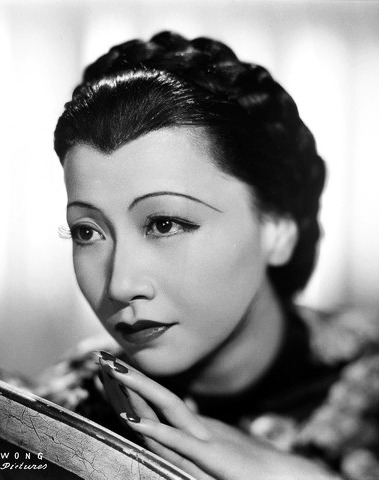
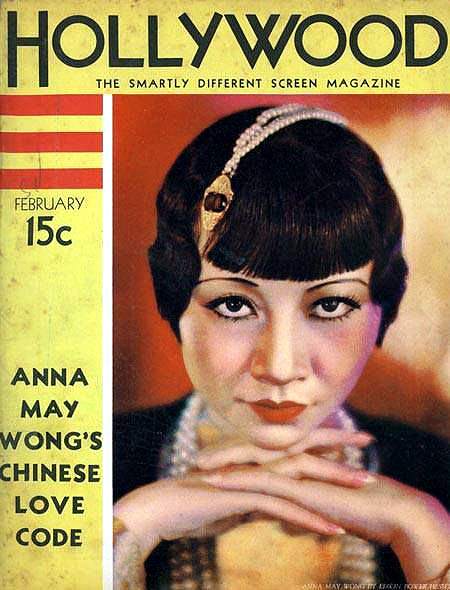

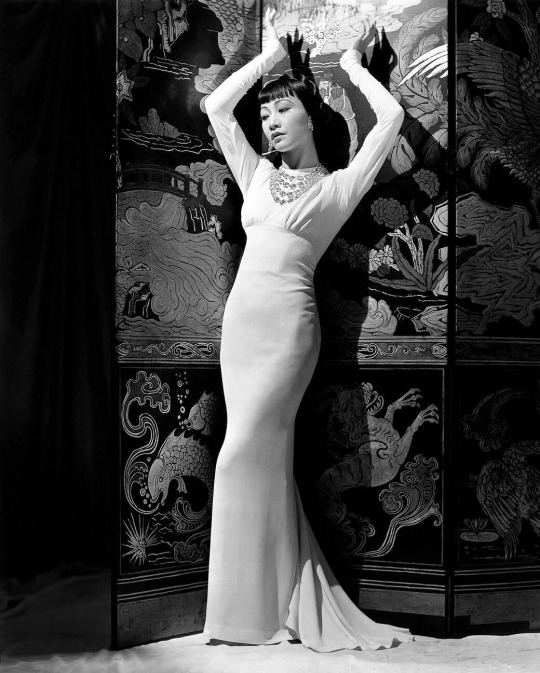


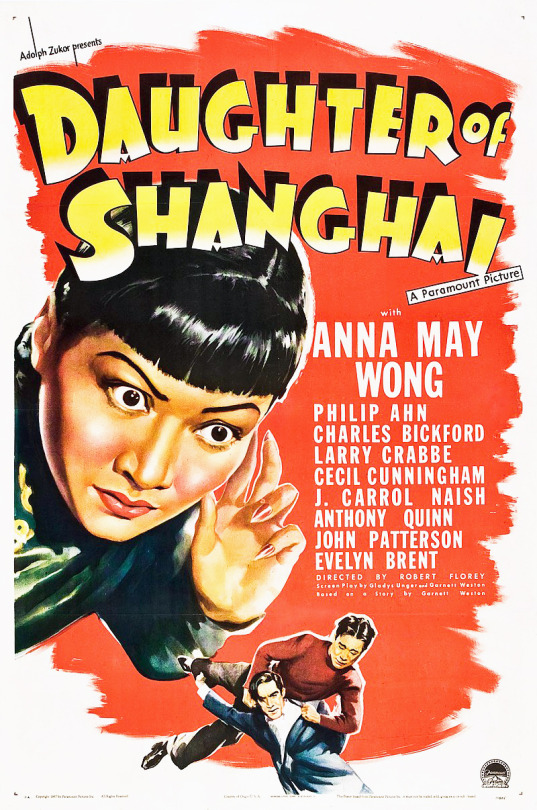
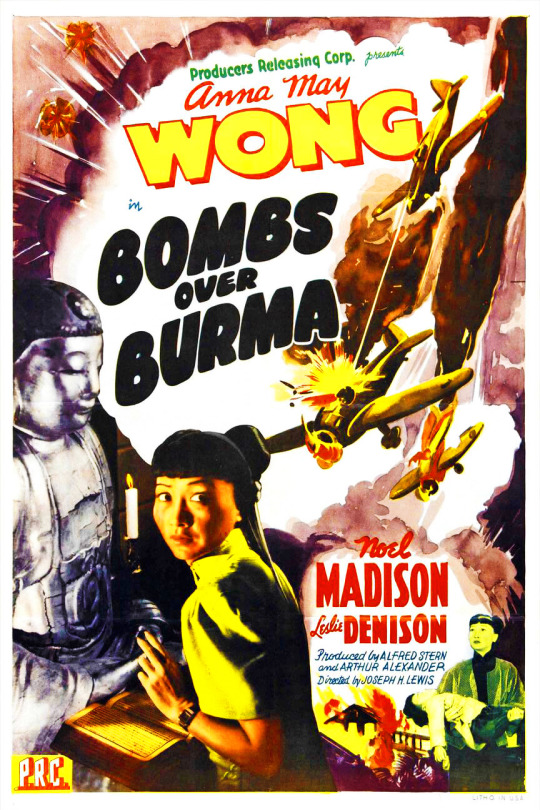


Wong Liu Tsong (born January 3, 1905 in Los Angeles), known professionally as Anna May Wong, was an American actress, considered "The First Asian American Hollywood Star" who helped humanize Chinese Americans to mainstream American audiences during a period of intense racism and discrimination.
Born to second-generation Taishanese American parents, Wong decided at an early age to become an actress. She was working at Hollywood's Ville de Paris department store when Metro Pictures needed 300 female extras in 1919.
Finding it difficult to keep up with her schoolwork, Wong dropped out of Los Angeles High School in 1921 to pursue a full-time acting career. The following year, she played her first leading role, in the two-color Technicolor movie The Toll of the Sea (1922), earning her critical acclaim. Nonetheless, Hollywood was reluctant to create starring roles for her; her ethnicity prevented filmmakers from seeing her as a leading lady. She spent the next few years in supporting roles providing "exotic atmosphere," such as a scheming Mongol slave in The Thief of Bagdad (1924).
Tired of being both typecast and passed over for lead Asian roles in favor of non-Asian actresses, Wong left Hollywood in 1928 for Europe, where she became a sensation. She returned to Hollywood with a Paramount contract in the 1930s and became more outspoken in her advocacy for better film roles for Chinese Americans and support of the Chinese struggle against Japan. Embarking on a year-long tour of China in 1936 to explore her roots and learn about Chinese theater, she chronicled her experience in a series of newspaper articles, which was later broadcast on television in the 1950s and included her narration.
Later in life, Wong invested in real estate and owned a number of properties in Hollywood while also doing some guest spots on television series. At the age of 56, Wong died of a heart attack as she slept at home in Santa Monica, California, two days after her final appearance on television.
Legacy:
Won the Photoplay Awards - Best Performances of the Month in Feb 1923 and Oct 1929
Auctioned off her movie costumes and donated the money to the Chinese Benevolent Association of California to support Chinese refugees.
Wrote the preface to a cookbook entitled New Chinese Recipes, one of the first Chinese cookbooks, the proceeds of which she donated to United China Relief in 1942
Donated her salary from Bombs over Burma (1942) and Lady from Chungking (1942) to the then United China Relief
Was the first Asian American Actress to lead a TV series The Gallery of Madame Liu-Tsong, which was specifically written for her
Is the basis of the 1971 poem "The Death of Anna May Wong" by Jessica Hagedorn
Is the namesake for the Anna May Wong Award of Excellence, given yearly at the Asian-American Arts Awards, and the Anna May Wong Award, an annual award by the Asian Fashion Designers group since 1973
Commemorated by the country of Grenada with a stamp in 1992 in its USO 50th anniversary series
Featured in curated several retrospectives, such as A Touch of Class for BFI Southbank in 1995, Anna May Wong: From Laundryman’s Daughter to Hollywood Legend at the Museum of Modern Art in 2004, and Anna May Wong at the American Museum of the Moving Image in 2006
Is the subject of China Doll, The Imagined Life of an American Actress, an award-winning fictional play by Elizabeth Wong in 1995
Was given tribute by Lucy Liu who dedicated her Hollywood Walk of Fame speech to her in 2019
Is the basis of a series of persona poems in Sally Wen Mao's Oculus: Poems, published in 2019
Honored with a Google Doodle in 2020 on the 97th anniversary of the release of her first film that she plays the lead
Featured in several exhibits, including "Beyond the Icon: Anna May Wong" at the Academy Museum of Motion Pictures in 2021, "Anna May Wong Abroad" at Houghton Library in Harvard University in 2023, "Not Your China Doll: Art Inspired by Anna May Wong" at Chelsea Market in 2024, "Anna May Wong: Icon of the Silver Screen" at the San Diego Chinese Historical Museum in 2024 and “Unmasking Anna May Wong” at the Chinese American Museum in January 2025
Is the namesake of the Ballad of Anna May, a coffee shop in Singapore which opened in 2021 and the Anna May Bar & Lounge at Crustacean Beverly Hills, which opened in 2022
Depicted by the United States Mint on the reverse of the quarter coin as a part of the American Women quarters series, becoming the first Asian American on American coinage in 2022
Honored as Turner Classic Movies Star of the Month for April 2022
Commemorated by Mattel with the release of a Barbie doll modeled on Wong in honor of Asian American and Pacific Islander Heritage Month in 2023
Honored by the Santa Monica City Council in 2023
Has a biopic from Working Title Films in development, with British actress Gemma Chan set as the lead
Has a star on the Hollywood Walk of Fame at 1708 Vine Street for motion picture
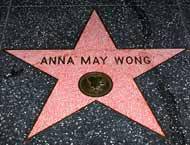
#Anna May Wong#Wong Liu Tsong#The First Asian American Hollywood Star#AAPI#Asian-American#Chinese#Silent Films#Silent Era#Silent Film Stars#Golden Age of Hollywood#Classic Hollywood#Film Classics#Old Hollywood#Hollywood#Movie Star#Hollywood Walk of Fame#Walk of Fame#hollywood legend#1900s#28 Hollywood Legends Born in the 1900s
3 notes
·
View notes
Text
Olivia Hussey, Teen Star of a ‘Romeo and Juliet’ on Film, Dies at 73
Her passionate portrayal of Juliet in Franco Zeffirelli’s 1968 adaptation won enduring acclaim. In 2023, she sued over the circumstances of a nude scene.

Olivia Hussey as Juliet for the 1968 movie “Romeo and Juliet.” She was only 15 when filming began. Credit...Universal History Archive — Getty Images
By Alex Traub Dec. 30, 2024 Updated 1:20 p.m. ET
Olivia Hussey, whose performance as the female lead in a 1968 film adaptation of “Romeo and Juliet” became its own Shakespearean tale, encompassing glory improbably achieved, helplessness with newfound power and memories that darkened over the years, died on Friday at her home in Los Angeles. She was 73.
The cause was breast cancer, her publicist, Natalie Beita, said.
Ms. Hussey’s lifelong association with Juliet came from how rapturously that movie was received. Much of the reaction concentrated on the decision of its director, Franco Zeffirelli, to cast two unknown teenagers as his leads. Ms. Hussey was 15 when filming began; her co-star, Leonard Whiting, was 17.
It was standard at the time to give the roles of the desperate lovers to established stars. Leslie Howard, for one, was 43 when he made his debut as Romeo in a 1936 adaptation.
What Ms. Hussey and Mr. Whiting lacked in practiced elocution they more than made up for in emotional intensity, suggesting an identification with their characters.
Mr. Whiting sprinted from Juliet’s bedroom with a wild but innocent exuberance. When Juliet’s nursemaid (Pat Heywood) counseled that Juliet go through with a pragmatic marriage to a man other than Romeo, Ms. Hussey responded with an extraordinary facial expression — wide-eyed, horrified, stupefied — suggesting that it was her first encounter with the possibility of betraying love.
In a review for The Chicago Sun-Times, Roger Ebert wrote, “I believe Franco Zeffirelli’s ‘Romeo and Juliet’ is the most exciting film of Shakespeare ever made.” He credited the film with “the passion, the sweat, the violence, the poetry, the love and the tragedy in the most immediate terms I can imagine.”
The movie grossed nearly $39 million at the domestic box office (about $350 million today) and it won Academy Awards for cinematography and costumes.

The director Franco Zeffirelli, left, with Ms. Hussey and her co-star, Leonard Whiting, at the Parisian premiere of “Romeo and Juliet.”Credit... Eustache Cardenas/Associated Press
A featurette on the making of the film captures the tenor of Ms. Hussey and Mr. Whiting’s stardom. “These are the most talked-about teenagers in the world today,” the narrator says.
Ms. Hussey traveled widely promoting the film. At one point, in Britain, she did so much dancing at a dinner with Prince Charles that she took her shoes off, stretched her legs across his lap and received a royal foot massage.
Yet in the years to come Ms. Hussey did not have another big role that earned both box-office success and critical acclaim. She spent much time commemorating her role as Juliet.
One part of the movie was remembered for something other than artistry: a brief scene in which Romeo and Juliet wake up nude in bed together. The camera lingers on Mr. Whiting’s buttocks and registers a flash of Ms. Hussey’s breasts.
Mr. Ebert castigated those who were scandalized by the scene — “A lot of fuss has been made about the brief, beautiful nude love scene,” he wrote — and Ms. Hussey seemed initially to feel the same way, describing Mr. Zeffirelli as a father figure whom she would have liked to work with on all of her movies.
But in her 2018 memoir, “The Girl on the Balcony,” she was more ambivalent.
With Mr. Zeffirelli’s assurance, she wrote, she had thought that she would be clothed in the scene, until she found herself having makeup applied “head to toe,” prompting what she called a “small panic attack.” One “dirty old man” on the crew, she wrote, had to be removed from the set.
“Nobody my age had done that before,” she told Variety in 2018, referring to the nude scene. Yet she added, “It was needed for the film.”
During her press tour for the book, she told Fox News that the scene “was done very tastefully” and “wasn’t that big of a deal.” Mr. Zeffirelli wrote an adoring foreword to the book.
Ms. Hussey’s attitude took another turn in December 2022, when she and Mr. Whiting sued Paramount Pictures, the film’s distributor, seeking damages of up to $500 million, claiming that they had been forced to appear nude and that the movie constituted “child pornography.” The suit was prompted by a California law that temporarily suspended the statute of limitations on claims of child sexual abuse.

Ms. Hussey in 2018 promoting her memoir, “The Girl on the Balcony,” in Los Angeles. Credit... Brandon Williams/Getty Images
A judge threw out the suit in May 2023, ruling that the scene was not pornographic.
New York magazine reported that at the time of the suit Ms. Hussey was $22,000 in debt. In an interview with Variety, she said that she and Mr. Whiting had each received only 1,500 British pounds (roughly $35,000 today) for their performances.
“Looking back on all of that, Leonard and I, we felt exploited throughout,” she said.
Olivia Osuna was born on April 17, 1951, in Buenos Aires to Andreas and Joy Hussey. Her father was a tango singer. Her parents divorced when Olivia was 2, and her mother took her and Olivia’s brother, Andrew, to her native England, where she worked as a legal secretary in London. The children used their mother’s surname.
Joy Hussey was an observant Roman Catholic, and Olivia would walk around her home with a towel on her head, pretending to be a nun, she recalled. She realized that what she liked was not the idea of being a nun but the pretending to be one. She started attending drama school as a little girl.
In 1966, Olivia starred in a stage adaptation of Muriel Spark’s novel “The Prime of Miss Jean Brodie” alongside Vanessa Redgrave. She got the role of Juliet after two auditions.
Ms. Hussey played the Virgin Mary in another Zeffirelli film, “Jesus of Nazareth” (1977), and the titular role in “Mother Teresa,” a 2003 television biopic. She also starred in “Black Christmas” (1974), a horror movie that was panned at the time but that later earned Ms. Hussey the reputation as the “prototype” of the last female survivor of a slasher film, as The New York Times reported in 2015.

Ms. Hussey in 2018 at the TCM Classic Film Festival Opening Night Gala in Hollywood. Credit... Tara Ziemba/WireImage, via Getty Images
In later interviews, she said that the success and hoopla surrounding “Romeo and Juliet” had exhausted her, causing her to turn down movie roles opposite John Wayne and Richard Burton and to focus instead on her personal life.
Ms. Hussey’s first three marriages ended in divorce. She is survived by her husband, David Eisley; a son, Alexander Martin, from her first marriage, to Dean Paul Martin, the son of the singer Dean Martin; another son, Maximillian Fuse, from her third marriage, to Akira Fuse, a Japanese pop star; a daughter, India Eisley; her brother; and a grandson. She was diagnosed with breast cancer in 2008.
Mr. Whiting, a lifelong friend of Ms. Hussey’s, once sent her a darkly comic screenplay he wrote in which Romeo and Juliet live on after their youth. Ms. Hussey responded that she could not play the part, she told Variety in 2018, for the same reason that she never went out in sweatpants: She wished to keep alive the public image of herself as Shakespeare’s Juliet.
That was how she met Mr. Eisley. He saw her at a delicatessen and introduced himself as someone who had seen her performance in “Romeo and Juliet” 50 times. He turned out to know every line of the play.
“I couldn’t resist him,” Ms. Hussey told the British newspaper The Telegraph in 2002. “I am such a die-hard romantic. I guess a part of me thinks I am Juliet.”
John Yoon contributed reporting. Alex Traub works on the Obituaries desk and occasionally reports on New York City for other sections of the paper. More about Alex Traub
#The New York Times#Franco Zeffirelli#Romeo and Juliet#Olivia Hussey#Muriel Spark#John Yoon#David Eisley#Alexander Martin#Dean Paul Martin#Maximillian Fuse#Akira Fuse#India Eisley
2 notes
·
View notes
Text
Before YouTube deleted my account and banned me, this was the most commented-upon film on my channel. Find out why.
Discover thousands more gay-themed movies.
From Perplexity:
Under the Waters is a 2022 short film directed by Ambiecka Pandit that explores complex themes of queer desire and the emotional turmoil surrounding it. The film, which runs for 17 minutes, has garnered attention for its sensitive portrayal of a sexual transgression between two teenage boys during a family vacation at the beach.
Plot Overview
The narrative centers on Sarang, a pubescent boy, and Mihir, an older teenage male, as they navigate their feelings in the context of a seaside family gathering. The film captures the tension between anger and longing, fear and denial, as Mihir attempts to teach Sarang how to swim. This seemingly innocent interaction escalates when Mihir's hand slips, leading to a moment of inappropriate contact that profoundly affects both boys. Sarang's internal conflict is palpable as he grapples with feelings of horror, desire, and betrayal, ultimately retreating into silence and confusion as their relationship shifts dramatically123.
Themes and Style
Ambiecka Pandit’s direction is noted for its empathetic approach, allowing the audience to witness the subtle complexities of teenage desire without moralizing the experience. The film delves into the confusion and shame often associated with emerging sexuality, portraying the characters' emotional states through nuanced performances and intimate cinematography. The editing is tight, ensuring that each moment contributes to the overall emotional landscape, creating a sense of urgency and tension that culminates in a powerful climax23.
Critical Reception
The film has received positive reviews for its bold storytelling and the performances of its lead actors, particularly Nishant Bhavsar as Sarang. Critics have praised Bhavsar for his ability to convey a wide range of emotions, from vulnerability to burgeoning confidence as he navigates his feelings for Mihir. The film has been showcased at notable festivals, including the Indian Film Festival of Los Angeles and the Dharamshala International Film Festival, highlighting its relevance in contemporary discussions about queer narratives in cinema123.Overall, Under the Waters stands out as a poignant exploration of desire and the complexities of adolescent relationships, making it a significant contribution to the landscape of queer cinema in India.
Defend culture, not copyright.
2 notes
·
View notes
Text
Ernestine Wade
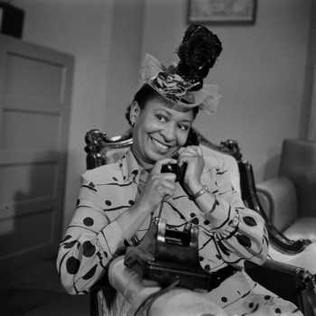
By Life Magazine via Google Images-Photographer Loomis Dean., Fair use, https://en.wikipedia.org/w/index.php?curid=28885998
Ernestine Wade (August 7, 1906 – April 15, 1983) was an American actress. She was best known for playing the role of Sapphire Stevens on both the radio and TV versions of The Amos 'n' Andy Show.
Born in Jackson, Mississippi, Wade was trained as a singer and organist. Her family had a strong connection to the theater. Her mother, Hazel Wade, worked in vaudeville as a performer, while her maternal grandmother, Mrs. Johnson, worked for the Lincoln Theater in Baltimore, Maryland.
Ernestine grew up in Los Angeles and started her acting career at age four. In 1935, Ernestine was a member of the Four Hot Chocolates singing group. She appeared in bit parts in films and did the voice performance of a butterfly in the 1946 Walt Disney production Song of the South. Wade was a member of the choir organized by actress-singer Anne Brown for the filming of the George Gershwin biographical film Rhapsody in Blue (1945) and appeared in the film as one of the "Catfish Row" residents in the Porgy and Bess segment. She enjoyed the highest level of prominence on Amos 'n Andy by playing the shrewish, demanding and manipulative wife of George "Kingfish" Stevens. Wade, Johnny Lee, and Lillian Randolph, Amanda Randolph, Jester Hairston, Roy Glenn (and several others) were among the Amos 'n' Andy radio cast members to also appear in the TV series.
Ernestine began playing Sapphire Stevens in 1939, but originally came to the Amos 'n' Andy radio show in the role of Valada Green, a lady who believed she had married Andy. In her interview that is part of the documentary Amos 'n' Andy: Anatomy of a Controversy, Wade related how she got the job with the radio show. Initially there for a singing role, she was asked if she could "do lines". When the answer was yes, she was first asked to say "I do" and then to scream; the scream got her the role of Valada Green. Ernestine also played the radio roles of The Widow Armbruster, Sara Fletcher, and Mrs. Van Porter.
In a 1979 interview, Ernestine related that she would often be stopped by strangers who recognized her from the television show, saying "I know who you are and I want to ask you, is that your real husband?" At her home, she had framed signed photos from the members of the Amos 'n' Andy television show cast. Tim Moore, her TV husband, wrote the following on his photo: "My Best Wishes to My Darling Battle Ax from the Kingfish Tim Moore".
Wade defended her character against criticism of being a negative stereotype of African American women. In a 1973 interview, she stated "I know there were those who were offended by it, but I still have people stop me on the street to tell me how much they enjoyed it. And many of those people are black members of the NAACP." The documentary Amos 'n' Andy: Anatomy of a Controversy covered the history of the radio and television shows as well as interviews with surviving cast members. Ernestine was among them, and she continued her defense of the show and those with roles in it. She believed that the roles she and her colleagues played made it possible for African-American actors who came later to be cast in a wider variety of roles. She also considered the early typecast roles, where women most often were cast as maids, not to be damaging, seeing them in the sense of someone being either given the role of the hero or the part of the villain.
In later years, she continued as an actress, doing more voice work for radio and cartoons. After Amos 'n' Andy, Wade did voice work in television and radio commercials. Ernestine also did office work and played the organ.
She also appeared in a 1967 episode of TV's Family Affair as a maid working for a stage actress played by Joan Blondell.
Ernestine Wade is buried in Angelus-Rosedale Cemetery in Los Angeles, California. Because she had no headstone, the West Adams Heritage Association marked her grave with a plaque
11 notes
·
View notes
Note
This is why I can't take the Golden Globes seriously. Challengers in the Comedy/Musical category and Complete Unknown in the Drama category.
Also the best directed movie of the Year, Dune2, Denis was snubbed
Marianne Jean-Baptiste snubbed, when she just won awards in New York Film Critics Circle • Los Angeles Film Critics Association • British Independent Film Awards
Danielle Deadwyler has been winning awards por The Piano Lesson, another huge snubbed
This is why I can't take the Golden Globes seriously. Challengers in the Comedy/Musical category and Complete Unknown in the Drama category.
I actually think this was done on purpose? I think it actually gives "Challengers" more of a chance at winning than had they put it in the Drama category. It also gives Zendaya more of a chance at winning Best Actress. Plus, "Challengers" does kind of seem like a comedy when you think about it lol 😆 Idk if I'd put it in the drama category with all of the other elements of the movie going on lol, but maybe that's just me? 😅🤷🏾♀️
Also the best directed movie of the Year, Dune2, Denis was snubbed
Yea, "Dune: Part 2" getting a Best Motion Picture (Drama) nomination, but Denis not getting a Best Director nomination is just a crime. The film was great because of him! It was an epic masterpiece!
I still take the Golden Globes seriously, but like you, there are quite a few people that I felt were deserving of nominations but were snubbed this year, but I know that not everyone can be nominated lol, and this year's race is pretty tight.
I'm happy for those that were nominated though! 😊
3 notes
·
View notes